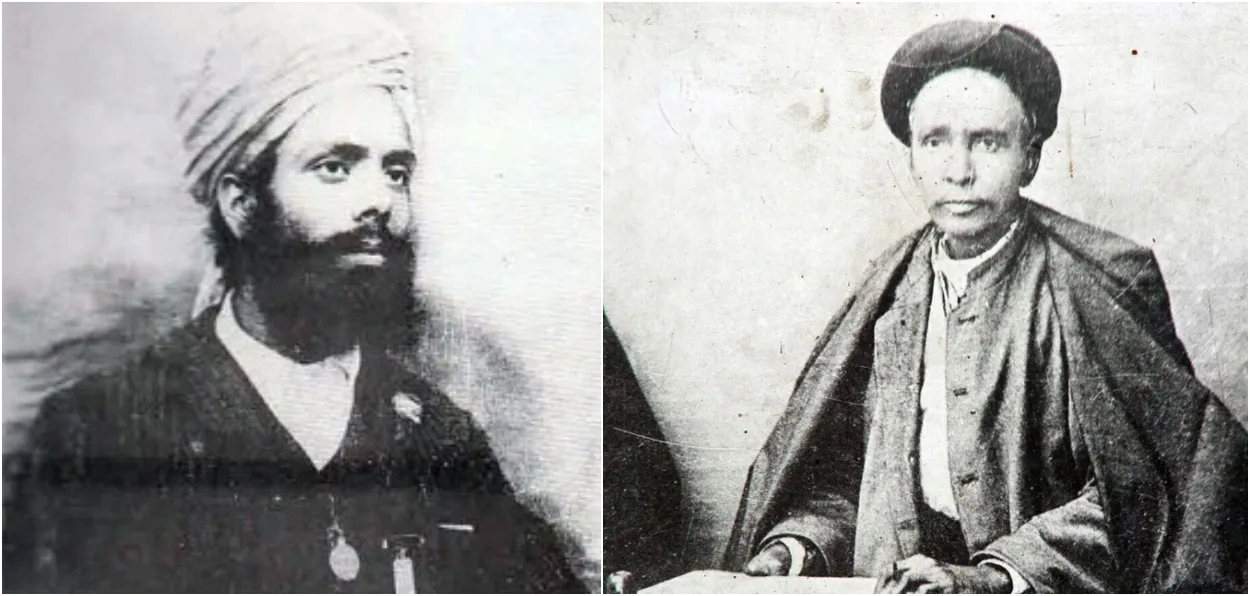
Saquib Salim
“I will pay Rs. 2000 each for the delivery of Amba Parshad and Ajit Singh. Do you have any further information about them?”
This is the text of a telegram from the Deputy Director of Criminal Intelligence, Simla, to The Political Resident in the Persian Gulf, Bushire (Bushehr in Iran) on 29 June 1910. Sufi Amba Prasad and Sardar Ajit Singh were important revolutionaries who had fled from Punjab, and the British were looking for them. Initially, a reward of Rs. 1000 each was declared for capturing them, and it was later raised to Rs. 2000.
Sardar Ajit Singh, the uncle of Shaheed Bhagat Singh, led the agrarian movement in Punjab along with Lala Lajpat Rai, Sufi Amba Prasad, and Agha Haider in 1907. They organized the Anjuman-i-Muhabbat-i-Watan, and published Bharat Mata journal. They faced arrest. In October 1909, Ajit Singh with Sufi Amba Prasad, Thakur Das, Rishiskeh, and Zia-ul-Haq left for Iran to establish a revolutionary party there.
Sufi Amba Prasad, a resident of Moradabad, published an Urdu Newspaper, Jami-ul-Ulam. In 1897, the paper was impounded, and he was sentenced to 18 months' imprisonment for trying to incite the Indian Muslims against British Rule.
The High Court favoured an even higher sentence. The bench said, “Having regard to the gravity of the offence which Amba Prasad committed, and to the misery, ruin, and punishment which he might have brought upon ignorant people, the sentence which was passed upon him was entirely inadequate.”
Later, Amba Prasad played an important role in agrarian unrest in Punjab and fled to Iran in 1909.
Ajit Singh and Amba Prasad, along with three other revolutionaries, reached Bushehr, Iran, in October 1909. On reaching Iran, they met Seyyed Abdollah Behbahani, one of the tallest leaders of the Iranian Revolutionaries and a prominent Islamic scholar. They told Behbahani about the situation in India, and they reached a conclusion that the Iranian and Indian revolutionaries should join hands against their common enemies, i.e., the British Government.
The team then, in consultation with the Iranian leadership, took the road to Tangestan, where they introduced themselves to the Khan of Tangestan, Jauri Khizar. Meanwhile, British horsemen also reached there following them, but were driven away by Khizar’s militia.
From there, Amba Prasad and Ajit Singh went to Salar-al-Daulah, the leader of the Kashguli and Khuka tribes. He accorded them his protection and told the British that the Indian revolutionaries would not be handed over to them.
Indians and Iranians had a common enemy, British Imperialism, and they joined forces to fight for their countries.
Ajit Singh went to Tehran and from there left for Europe in 1910. Sufi Amba Prasad went to Shiraz and started publishing a newspaper Aab-e-Hayat. He also founded a Sufi Society with the help of Shaykh Muhammad Rahim in Shiraz and a School. Ali Asghar Hekmat, the First Iranian Ambassador to free India, was one of his students. Who had compiled many of Prasad’s writings?
By the time the First World War started in 1914, Sufi Amba Prasad’s network with the Iranian revolutionaries had developed to a point where an armed revolution could be carried out. A team of Indian revolutionaries led by Dr. P. S. Khankhoje came from Constantinople with the help of Germany to him in Shiraz in 1915. They collaborated with the Iranian revolutionaries, and an armed militia was raised to attack the Indian Frontier along Baluchistan.
Sufi Amba Prasad was caught from the battlefield along with Kedarnath Sondhi in January 1917. Sufi committed suicide in prison, a day before he was scheduled to be shot dead by a firing squad. Kedarnath was shot dead.
READ MORE: Sakeena Akhtar's journey from Srinagar to India’s first female cricket coach
Amba Prasad was popularly addressed as Agha Sufi-ye Hindi or by his Iranian aliases, ‘ Mohammad Hoseyn Sufi ', and Mohammad Hoseyn “Khadem e Shari’ati” etc. by Iranians. His mausoleum is located near the famous poet, Sheikh Saadi’s grave. Sardar Ajit Singh wrote, “Sufi Amba Parshad died in Shiraz, where his tomb is still there. He died during the First World War when he organized people to fight against the British. His corps was called Zam-e-Khizar (Dil-ara-i-Watan). Sufi fell prisoner in the hands of the British. The day they wanted to shoot him, they found him dead. It was 1916, Sufi used to say the British could not kill him, but that he would take his own life. One day, I hope Indians will bring his tomb or at least his remains here.”
